The 10 most important hardware samplers in history
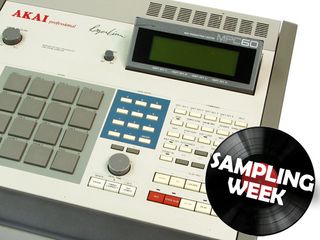
The machines that changed music forever
The hardware sampler is, alas, dead. Well, just about, anyway. The sampler was one of the first victims of the computer music revolution, and understandably so. The whole point of sampling is to convert an audio snippet into a bit of computer code that can then be manipulated as necessary. It’s a job for software, and samplers have always been little more than dedicated computers designed around such software.
However, once upon a time, the sampler was a technological marvel; a cutting-edge production tool afforded only by those whose names featured somewhere near the single digits of the pop charts. The introduction of affordable sampling kick-started a musical revolution that was equally (if not even more) paradigm-shattering than hard disk recording (which in itself is an outgrowth of sampling technology).
It’s almost impossible to put together a 'best of' list describing samplers. If we were to do that, the most recent, high fidelity jobs would top the list, while historically more significant entrants wouldn’t make the cut. Instead, we’ve compiled a list of what we reckon to be the most important samplers of the last three decades (give or take). These instruments made (or attempted to make) an important cultural impact, changing the way music Is played and produced.
NEXT: Akai Z4/Z8
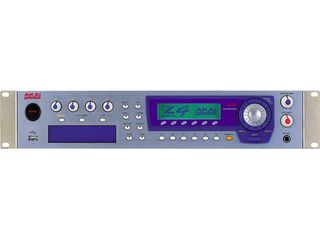
Akai Z4/Z8 (2002)
It was a matter of bad timing, really. By 2002, the year the Z8 and its little brother, the functionally identical Z4 (pictured above) were released, the era of the hardware sampler was at an end, dealt a death knell by friendly, sophisticated software alternatives. And that’s too bad, because the Z series broke new ground by being the world’s first 24-bit/96kHz hardware samplers. They also sported dual sets of MIDI I/O for a total of 32 MIDI channels and, with 64 voices of polyphony, was just conceivable that you might be able to make use of ‘em all, too.
Additionally, they sported 20GB internal hard drives and could be loaded with up to 512MB RAM. A wide variety of input and output configurations were available, though most of them were optional on the Z4. Also optional on the Z4 were the Z8’s built-in effects, by way of the EB4JS multi-effects board. The usual brace of reverbs and delays, along with choruses, dynamics, flangers were joined by more esoteric fare such as pitch-correction, distortion and auto-pan effects.
Standard sampling tools included the usual trimming, cropping, time-stretch, and looping (auto-looping was available). You could also slice regions and assign those regions to the keyboard. Resampling (with effects!) and BPM matching were in tow as well.
Standard synthesis functions were also in place, including Akai’s best-yet selection of filter types. There was a pair of LFOs per voice along with three envelope generators (including two multi-stage jobs) per voice and plenty of opportunities for modulation and mayhem.
Most of the day-to-day jobs were made easier with the free (and still available) AKSYS editing software. Said software ran on your main computer to which the sampler was tethered via a USB cable. Real-time tweaking was provided by a brace of assignable knobs; four on the Z4, and (natch) eight on the Z8.
If you’re thinking that the Z4 and Z8 sound like they could give a software sampler a run for its money, well, you can see why Akai figured that there was still room in the marketplace for a kick-ass hardware sampler. Unfortunately for Akai, the Z4 and Z8 went nowhere fast and were blown out for ridiculously low prices. And that’s too bad - they were probably the best samplers nobody ever bought!
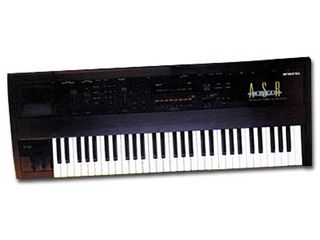
Ensoniq ASR-10 (1992)
Ensoniq made its bank on affordable sampling with the groundbreaking (and price-busting) Mirage and its synthetic companion, the ESQ-1. Before long, the company's customers began clamouring for machines of a more professional quality and the company responded with the EPS sampler and its effects-laden, improved-fidelity offspring, the EPS 16+.
They sold like the proverbial hotcakes to legions of users who quickly found them to be, well, less than dependable. This writer used to drag a pair of EPS samplers to gigs, well aware that either machine could drop dead at any given moment, flashing the dreaded “SYSTEM ERROR 018” across its fluorescent display.
To its credit, Ensoniq was always quick to repair the samplers that come in from the field, and even more to its credit, it learned from its mistakes, and when it came time for the follow up, it did it right and then some, resulting in the now-classic ASR-10.
The ASR-10 was a massive machine. It was big, sleek and looked like a million bucks. Sounded like it too, thanks to a high resolution sampling engine and 64 of the best effects (culled from the swanky DP/4 effects processor) ever to grace a workstation.
The DP/4 wasn’t the only Ensoniq product to lend technology to the ASR-10. Samples could be stored and played back in much the same way as could Ensoniq’s Transwaves from the company’s VFX synthesizers. A trio of envelope generators, LFO, noise generator and a modulation matrix came together to form a very powerful synthesis engine.
There was, of course, the ever-popular Ensoniq sequencer, allowing 16 tracks at 96 PPQ resolution. 80 sequences could be stored and chained into a song. Oh, and the ASR-10 could actually sample while the sequencer was running!
And let’s not forget the 'tape recorder', that allowed two tracks of audio recording that could coincide with the sequencer. Wow. Did we mention that it resampled, too?
Obviously, the ASR-10 was a machine to be reckoned with and it is still widely sought after on the second-hand market. A terrific machine.
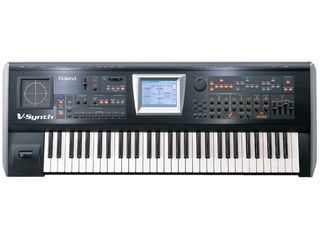
Roland V-Synth (2003)
The only instrument on the list still in production, Roland’s V-Synth is, as its name implies, sold as a synthesizer, rather than a sampler. In truth, it’s a little of both. It combines a couple of different synthesis techniques, including the same analogue modelling found in Roland’s SH-201. This is coupled with a sophisticated and, it must be said, relatively unusual take on sample-playback.
Like many modern ROMplers, the V-Synth comes with loads of familiar samples that are used as the basis for the various preset patches. However, the V-Synth parts company with most ROMplers in that it allows the user to overwrite the entire factory sample set. These samples can be combined with the analogue modelling engine and spat through the COSM-based filters and effects. All the usual synthesis functions are present and accounted for and well, it really doesn’t sound that unique, does it? No, not until you take a hard look at what Roland’s sample-playback technology can do with your samples.
Y’see, some time back, Roland had a bit of a fumble with its high-priced VP-9000. This was the instrument that introduced the company’s tim-stretching-pitch-shifting sample manipulatin’ VariPhrase technology. While the promise of altering a sample’s tempo without affecting its pitch is now old-hat, back in 2001, it was rarely seen on a dedicated hardware unit. Unfortunately, the price (over 3k!) of the VP-9000 seemed kinda steep for a one-trick pony.
However, that same technology, when seen as part of a more versatile instrument makes a lot of sense. Especially if said instrument has hi-falutin’ performance doodads like a pair of D-Beam controllers or the Time Trip touchpad that can be used to 'play' the sample manipulation in real-time.
The V-Synth is a different take on sampling. If you want to stack up 127 velocity-layered drum hits or create a meticulously multi-sampled piano patch, you’re going to want to look elsewhere. However, if you want to lob in some samples and then render them utterly unrecognizable, then V-Synth is your boy.
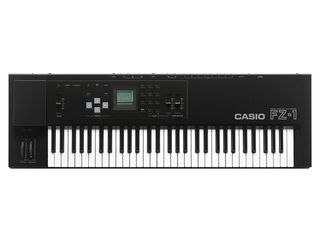
Casio FZ-1 (1987)
Sometimes a product comes out with everything it takes to blow the competition out of the water and yet remains virtually unknown and unappreciated, eventually sinking without a trace while other, lesser products reap profits and praise.
Such was the case with Casio’s FZ-1. It should have become a classic. It broke new ground in terms of sound quality, price and interface, and yet critical reaction was lukewarm at best and sales, while good, were not anywhere near the numbers that the humungous calculator company was accustomed to dealing with. Even the blockbuster sales of the CZ-101 weren't enough to keep Casio interested in the pro music market.
And the FZ-1 was indeed a thoroughly professional instrument. Built like a tank and looking far more sophisticated than most other samplers of the day, it sported a cool LCD screen on which you could actually see your waveforms. And those waveforms? They were recorded in 16-bit (albeit 32kHz) glory, baby. This was pretty exciting stuff in 1987, especially given that the FZ-1 cost just over a couple of grand. Other machines in this price range lacked graphical displays and were hobbled by 12-bit sampling.
Furthermore, the FZ-1 provided built-in additive synthesis, allowing users to cobble together their own waveforms that could then be combined with samples and spat through the usual subtractive signal path. Many of the synthesis functions were carried over from Casio’s CZ series, including its eight-stage envelopes.
The FZ-1 was understandably seen as a threat by many competitive manufacturers, and some of them went out of their way to slander the product. They needn’t have bothered. Casio’s indifference to the pro market was already setting in and there wouldn’t be a follow up to this fine sampler. Nevertheless, the FZ-1 left the marketplace and the competition thinking very hard about what features should be included in a mid-priced sampler.
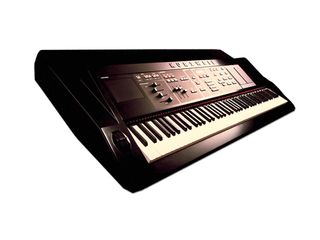
Kurzweil K250 (1984)
Look at those specs: 16-bit sampling with sampling rates up to 50kHz; a 12-track sequencer with up to 40 songs; velocity crossfading of samples; a pair of LFOs per voice; and a killer collection of multi-sampled instruments stored internally. Add to that FM synthesis, Mac-based editing and built-in effects and you’d be forgiven for thinking we were talking about a recent entry into the sampler stakes. And yet this machine was released in 1984.
Needless to say, such niceties didn’t come cheap back then, and the Kurzweil K250 broke the bank, coming in at over £10,000. Gulp. Still, if you bought the thing when it was released, chances are that you may not have felt the need to replace it for very many years. It sat front ‘n centre in Paul Schaffer’s rig on the Letterman show for decades. Pretty cool for futurist and inventor Ray Kurzweil’s first attempt at designing a musical instrument!
A peek beneath the hood reveals that things weren’t always as they were presented. For example, you couldn’t actually sample on the machine without the aforementioned Sound Modelling software, which wasn’t available until some time after the instrument’s release. And that meant that user sampling required that Mac.
And is that 16-bit really 16-bit, or is it 10-bits with some hocus-pocus going on under the hood? It never really mattered, ‘cos the K250 sounded fantastic and, with its 88 weighted keys, felt great to play. It was the instrument that heralded Kurzweil’s entry into the market and influences its product line even to the present day. You’ve probably heard the thing dozens of times and never even realised it. You probably thought you were hearing, say, an acoustic piano or a Steinberger bass. By whatever thaumaturgy Kurzweil’s boffins had at their disposal, they managed to make a superior-sounding instrument at a time when it simply shouldn’t have been possible.
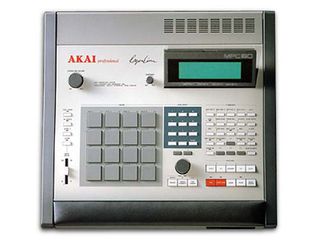
Akai MPC-60 (1988)
Roger Linn is pretty danged good at changing the landscape of popular music production. We probably don’t need to tell you that his Linn LM-1 drum machine single-handedly brought sampled drums into the pop music lexicon. After the LM-1, he produced a sequel, the LinnDrum, before setting to work on the ill-fated Linn 9000, which combined sampled drums, user-sampling and sequencing into a huge, stability-challenged package. Unfortunately, Linn Electronics shuttered its doors just after the Linn 9000’s release.
Not one to let a good idea get away, Linn would put everything he had learned about drum machines, sequencing and sampling into his next beatbox design, Akai’s MPC-60. Released in 1988, the MPC-60 featured 12-bit sampling, a 99-track sequencer with a 60,000 note capacity and the now-familiar 4 x 4 grid of drum pads.
Somewhat austere in appearance, and built like a battleship, it should be off-putting. Yet the MPC-60 is all about the jam. It’s a joy to program and to play. There’s something about the Linn beatboxes that groove like nothing else in the business. The MPC-60 was destined to become the hip-hop and R&B production tool of choice, and no wonder. The machine emphasizes the beat and its 12-bit samples have a bit of grit to ‘em that suits urban styles.
A steadfast and inspiring performer, it deserves its reputation, and though Akai (along with just about everyone else) has churned out variations on the theme since its release, there are those who won’t use anything but the real deal.
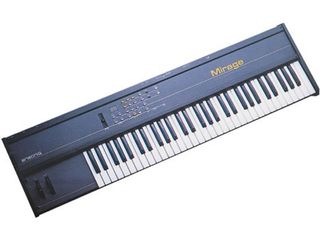
Ensoniq Mirage (1984)
Clearly, your humble chronicler has left the path of reason! Does he really intend to place the 8-bit slab of dirty grey that is the Ensoniq Mirage at number four on the list? For crying out loud, the thing has a two-digit hexadecimal LED display!
To comprehend just how earth-shattering the Mirage was upon its release, you must understand that the average working musician had absolutely no inroads into the world of sampling. Before the Mirage came along, only big names could afford samplers. The Emulator cost 8K and the Fairlight CMI a whopping 40k and up! The Mirage came in at a somewhat less breathtaking $1695 USD.
What did you get for such a relatively paltry sum? Well, lots, actually, but with a number of accompanying “gotchas”. The first gotcha came when you realised that while the Mirage was capable of some quite advanced sampling functions, you had to pony up an extra sum for the MASOS Advanced Sampling Software and the Advanced Sampling Guide to get ‘em.
The next gotcha came upon facing the dreaded user interface. Yep, it had a two-digit LED display and a smattering of buttons, though most of those were thankfully dedicated to one or two functions. The display’s limitations meant that you had to either memorise the considerable parameter list and the numbers to which they were assigned, or tear the relevant page out of the manual and tape it up somewhere nearby. We are embarrassed to say that we chose the latter option, and that tattered document has followed us from studio to studio for decades!
The Mirage offered, as suggested above, a grim 8-bit, 30kHz max sample rate. However, the onboard sample memory was limited to 128KB, so most users became quite good at adjusting the sample rates to eek out every last drop.
One of the things that has held the Mirage in good stead is its use of analogue filtering. The resonant filter has a dedicated 5-stage envelope and can deliver a healthy screech if pressed. It’ll also respond to, say, incoming velocity from the instrument’s own keyboard or its MIDI interface.
Fine, you say, but is the Mirage relevant today? Many pundits say no. We beg to differ. The Mirage can be had for ridiculously low prices and its grungy sound quality makes it a fine candidate for urban or industrial styles. There are PC-based editors that allow easier access to the machines innards and, in fact, there is still active support from Syntaur, which will sell you sounds, disks, manuals and even repair parts. More than that, it carries something called Soundprocess, an alternate operating system that transforms the Mirage into a 16-channel multi-timbral digital synthesizer.
The Mirage may seem like a joke today, but in the mid-'80s, it shattered the price barrier and gave many musicians their first taste of sampling, and that earns it a place on this list.
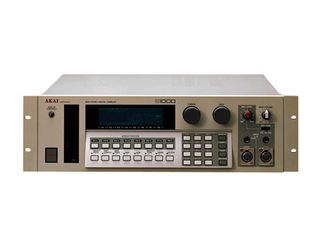
Akai S1000 (1988)
Following hot on the heels of Akai’s professional grade S900, the S1000 had a lot to live up to. The S900 had represented the middle ground between Ensoniq’s ultra-cheap Mirage and the higher end offerings from E-MU and others. It was easy to use, sounded good and sold by the truckload. However, it was possessed of one glaring limitation shared by virtually every other product on the market: it only supported monaural sampling. These days, we take stereo sampling for granted. However, in the late '80s, stereo samples were seen to hold little promise outside of using twice the memory and being at least twice as difficult to loop.
Nevertheless, the S1000 ushered in the era of stereo sampling and at a full CD-quality 16-bit depth and 44.1kHz sampling rate. You could access up to 32MB of sample RAM and perform all manner of sample editing acrobatics, including auto-looping, and even, after a bit, time-stretching.
The reserved paint job, generous backlit display, sharply-angled control panel and front-side XLR inputs made it clear that this was a professional machine from top to bottom. And at a time when sampler prices were becoming realistic, the S1000 hit the shelves at almost five grand. While this was considerably higher than, say, the latest Ensoniq offering, it was in keeping with contemporary products from Roland and Sequential.
It may have been pricey, but it sold even better than its predecessor, quickly becoming the industry’s standard workhorse. It was appreciated particularly by touring road crews, for whom its rugged build and ROM-based OS meant that it could be depended on night after night to make their jobs that much easier.
So ubiquitous was the S1000 that its file format became an industry standard as well. Even 20 years on, few developers would think of releasing a sampler that couldn’t tap into the vast existing library of S1000 sounds.
It isn’t flashy by today’s reckoning and it may not hold a candle to the latest software sampler, but chances are, if you bought an S1000 in the late '80s, it’s still on the job today.
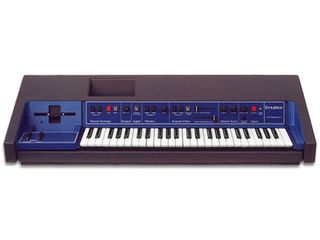
E-MU Systems Emulator (1982)
Go back and read the Mirage’s specs. Now compare that to the Emulator’s 8-bit, 27kHz sampling rate, 128Kbyte of sample memory. The Emulator comes up a bit short. More so when you consider that the Emulator provided no filtering without a third-party retrofit from JL Cooper. In fact, without the retrofit, the Emulator didn’t even have a proper envelope generator. There wasn’t even a release mode; when you triggered a note, the sample would play through until the end. Egads!
Oh, and the display? Well, it didn’t actually have one of those, either. All programming had to be done by ear. You could loop and truncate samples and they could be stored two each to 5 1/4-inch floppies.
So what did all this power cost? A staggering eight thousand beans. Consider, though, that the only other option at the time cost five times as much, and you can understand why the Emulator made the industry stand up and take notice. Limitations aside, nobody had heard anything quite like this. However, that also meant that no one had ever tried to sell anything quite like this, so the history of the initial Emulator is really a chronicle of a company trying to figure out exactly what musicians might need from this new type of instrument. Hence the retrofits.
E-MU, to its credit, divined that an included library of quality sampled instruments could help to sell the Emulator, and quickly wrangled up a more significant collection of factory sounds, some of which are familiar even today.
E-MU was very much traversing unmapped territory with the Emulator, and the lessons it learned would serve it well with the much more advanced EII and subsequent EIII, never mind all the other manufacturers that would benefit from E-MU's pioneering volley. Just as the Minimoog shaped all of the synthesizers that followed it forevermore, so, too, did the Emulator serve as the blueprint for future samplers. A truly seminal instrument.
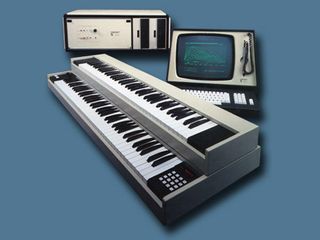
Fairlight CMI (1979)
It’s hard to imagine what music would have been like over the past three decades had the Fairlight not been introduced in 1979. This was the instrument that introduced the world at large to sampling, though oddly enough, sampling itself was an afterthought to those who conceived the thing. Indeed, the Fairlight was intended as an advanced synthesis tool, wherein waveforms could be drawn using the attached light pen and monitor.
Nevertheless, it was the Fairlight’s sampling facility that shook the world of music production and, along with the DX-7 synthesizer, dominated the sound of the first half of the '80s. The sampling specs were impressive: 16-bit, 100kHz sample rates, looping and resampling functions, all of which could be accessed through that high-tech monitor.
Looking for all the world like an Indica Gallery exhibit with its sterile, stark white veneer, it was all very futuristic and just the thing for the ensuing MTV-friendly, fashion-conscious new waver.
Still, at $40,000 to start, this was not and instrument to be afforded by the kids playing in the garage next door. This was a big money machine and it sold to big money artists like Thomas Dolby, The Cars, Prince, Trevor Horn, et al. In other words, musicians whose music was always going to saturate the airwaves, thereby imprinting the sound of the Fairlight (and sampling itself) onto our collective cultural consciousness.
Everyone wanted a Fairlight, and those that could afford ‘em signed on the dotted line. The rest of us would have to wait until other instrument manufacturers took up the baton and brought the price of sampling down to Earth. And that’s precisely what happened. In fact, there is a very direct example of the Fairlight’s influence: Dave Rossum of E-MU Systems was trawling the aisles of the AES show in 1980, when he witnessed the Fairlight doing its thang, and begun thinking about how he could bring an instrument solely dedicated to sampling to market for a reduced price.
The Fairlight would evolve over the years, remaining at the cutting edge of technology. Eventually, it would be toppled by the very instruments it inspired. Oddly enough, things have come full-circle and the original Fairlight CMI, with its quirky, distinctive sound is now seen as an example of retro chic, while those alter instruments have all but faded into memory.
Fairlights still trade for (relatively) high prices in the used market, but that isn’t to say that a battered second-hand unit is your only option. In a completely out-of-the-blue move, Peter Vogel, one of the men behind the original has revived the old dear and is offering a 30th anniversary edition. Now where’d we put that skinny tie?
Liked this? Now read: The 10 greatest synthesizers of all time
Connect with MusicRadar: via Twitter, Facebook and YouTube
Get MusicRadar straight to your inbox: Sign up for the free weekly newsletter

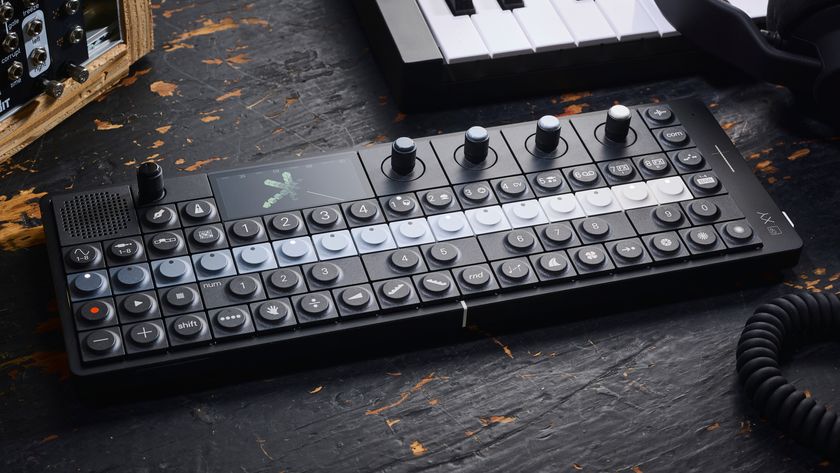


![Chris Hayes [left] wears a purple checked shirt and plays his 1957 Stratocaster in the studio; Michael J. Fox tears it up onstage as Marty McFly in the 1985 blockbuster Back To The Future.](https://cdn.mos.cms.futurecdn.net/nWZUSbFAwA6EqQdruLmXXh-840-80.jpg)






